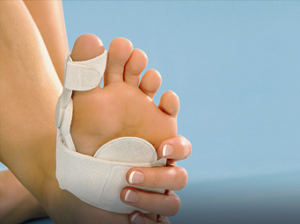“Since the operation my foot has been great. It’s lovely to walk and not feel that I have a stone in my shoe”
Nerve Pathology
Treatments
 |
Ingrowing Toenails |
 |
Bunions |
 |
Arthritis |
 |
Nerve Pathology |
 |
Verrucae, Corn & Skin Lesions |
 |
Heel Pain |
 |
Flat Feet |
 |
Toe Deformities |
 |
Lumps and Bumps |
Nerve Pathology
Any condition of the foot defined by which a problem or disruption of the nervous system has occurred. We have included some of the common conditions of nerve pathology below with common treatments. Of course if you are having any conditions resulting in pain in your foot, you should contact us immediately.
Conditions & Treatment
Morton’s Neuroma
In the foot, there are the long bones (metatarsals) and thin nerves running between them. The nerves split in a Y-shape when they reach the toes. If the metatarsals move abnormally, they can disrupt the nerve between them and this can cause inflammation and eventually permanent nerve damage.
Morton’s neuroma is the most common of this type and affects the nerve between the third and fourth toes.
Other Neuromas
A neuroma is a painful swelling of a nerve, usually in the ball or heel of the foot. Neuromas can occur after a nerve has been injured, sometimes this can occur from a wound. Symptoms include sporadic pain; burning, tingling or numbness of one or more toes; you can also get a popping sensation when walking. Pain can be managed by taking weight off the foot or by massaging the affected area.
Tarsal Tunnel Syndrome
Tarsal tunnel syndrome classified by chronic pain in the ankle, foot and toes caused by abnormal pressure on nerve roots.. The specific cause of tarsal tunnel syndrome is not known, but it can be a result of inflamed tissues around the tibial nerve, injury or other conditions that may affect the area. The main symptom of tarsal tunnel syndrome is tingling or burning pain while standing or walking that starts in the ankle and spreads to the toes. Pain is usually relieved during rest.
Treatment for tarsal tunnel syndrome depends on the cause of the pain but can include anti-inflammatory medicines, orthotics, corticosteroid injections or surgery. Surgery is usually used as a last resort to relieve pressure on the nerve.
Peripheral Neuropathy
Peripheral neuropathy refers to damage of the peripheral nerves, which branch out from the brain and spine to the rest of the body. It typically begins with pain, numbness, tingling, burning or weakness in the feet, legs and/or hands, and may progress to more serious conditions such as ulcers, pain and loss of sensation.
Numbness is especially dangerous, as sometimes do not detect an injury until the damage is so bad that the limb requires amputation. Peripheral neuropathy may develop because of a nerve disease or as a side effect of an illness or medication.
Other Nerve Compression Syndromes
Tibial nerve dysfunction is a condition involving loss of movement and/or sensation in the lower leg. This occurs as a result of damage to the tibial nerve, which may be caused by trauma, nerve pressure, or nerve compression. Symptoms may include numbing, burning, painful, or tingling sensations on the bottom of the foot, a weakened foot or knee, and trouble walking.
Some patients may benefit from surgery, during which lesions pressing on the tibial nerve are removed. Other treatment options for tibial nerve dysfunction include prescription pain medications and physical therapy.
Pinched nerves can take place in numerous parts of the foot. Usually the result of trauma or pressure from an ill-fitting shoe, a pinched nerve causes pain or a burning sensation toward the top of the foot.
Injections of corticosteroids and anti-inflammatory medications are often successful in treating pinched nerves. Other treatment methods include orthotics or special padding inserts for shoes. In more severe cases, surgery may be recommended to relieve the pressure on the nerve.
Brain Injury and Stroke with Foot Deformity
Foot deformity is a common result of a brain injury or stroke. Although it is often not painful, It causes the foot to turn inward and to the side and makes it more difficult for a patient to walk and in some cases can promote arthritis over time.
Treatment can begin with non-surgical methods such as manipulation and casting. The foot is manipulated into the proper position and then placed in a cast to stay in the corrected position. When non-surgical techniques are unsuccessful, surgery may be required to correct equinovarus foot deformity.
Surgery for this condition usually involves adjusting the tendons, ligaments and joints in the foot and ankle to keep it in a corrected position.


